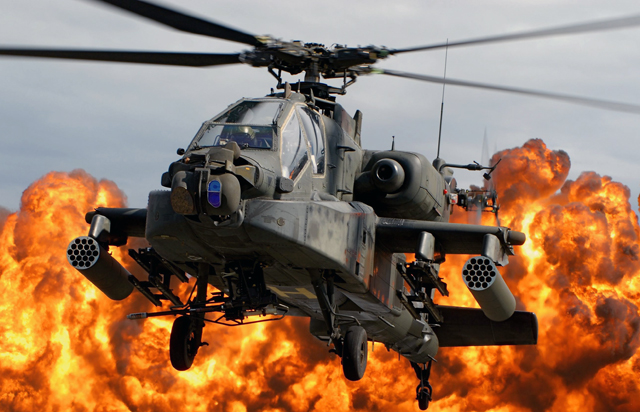Even as the US Army moves forward with fielding its first unit of Boeing AH-64E Block III attack helicopters, the service is planning to add further improvements to the Apache gunship.
"Right now, we are currently fielding the first unit equipped, our FUE [first unit equipped] unit, with Echo-models, and we're on track to meet that fielding schedule," says Col Jeff Hager, the army's Apache programme manager.
 |
|---|
| US Army |
Hager adds that Boeing has delivered 28 of 51 low-rate initial production AH-64Es that it is contracted to build. This year, the company will start producing full-rate production aircraft for an eventual total of 634 helicopters.
But even as the AH-64E transitions into full-rate production, some systems engineering work remains, Hager says. The changes, which will come in production Lots 4 through 6, include better embedded diagnostics for improved maintenance. The Apache will also gain the Link-16 data-link, which is typically found on fixed-wing combat aircraft. It will also be afforded improvements to its mast-mounted APG-78 Longbow fire control radar, which will improve range and add overwater capability.
Hager says that the army has not quite decided how the overwater capability would be used, but he says the Longbow radar in concert with the Lockheed Martin AGM-114 Hellfire missile could be used to attack landing craft or small warships. In the future, active electronically scanned array radar could be added to the aircraft.
Another addition will be the cognitive decision aiding system (CDAS), Hager says. CDAS is designed "to help the pilot and the crew with some of those tasks that tend to get a little cumbersome at times," he says. "It'll help him in those tasks in specific."
The army also intends to support Boeing's efforts to sell the Apache overseas, Hager says. Boeing's attack helicopter vice president, Dave Koopersmith, says that the company has seen an uptick in interest internationally for the Apache recently. "We have more demand signals for this dominant capability in this attack helicopter space," he says.
Source: Flight International
















